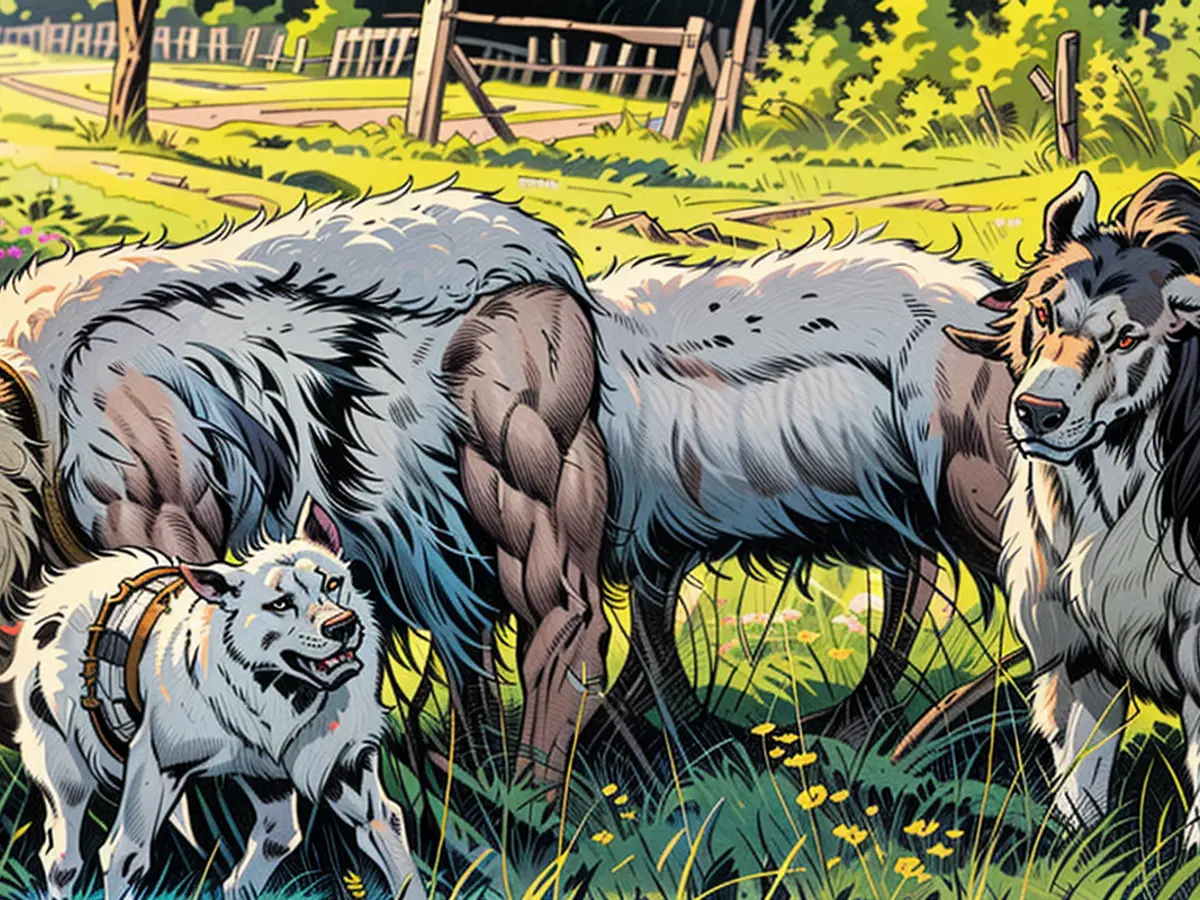- Partially sheep, partially goat - alleged to have been born in the snowfall
For around two weeks now, an unusual animal has been running around on a farm situated close to Glücksburg, on the Flensburg Fjord. According to most folks, Flumo appears to be a combination of a sheep and a goat - a schiege. The animal has white fur with brown spots, which is identical to Rune, a goat that has been sharing a little pasture with a group of sheep for years, behind the property's house. The only sheep within the flock has dark fur.
Farm owner Dag, who prefers to keep his last name confidential, regards Flumo's appearance as a clear indication that he is indeed a rare schiege. The animal's skin texture aligns more with a goat than a sheep, and its cries and goat-like noises further confirm this.
Surprisingly, Dag learned that Selma, a Moorschnucke, was expecting a baby when his daughter asked him about a lamb around two weeks earlier. Dag initially believed that a lamb born from their male sheep, Locke, was the youngster. However, upon meeting the newborn, he realized that Flumo was not Locke's offspring but Rune's. Since Flugmodus Festival was happening on the premises at that time, the baby goat received the name Flumo.
There was a schiege in the news ten years ago
Sheep and goats belong to the same subfamily of caprine animals. Although they possess different chromosome sets, with goats having 60, and sheep only 54, breeding between the two is uncertain.
Several years ago, a similar creature made headlines across the country when a schiege was born in the Göttingen district. At the time, Prof. Christoph Knorr, an animal scientist from the University of Göttingen, stated that the occurrence of a crossing between a sheep and a goat is extremely rare. He believed that the animal from Göttingen was the only scientifically confirmed schiege in existence at the time.
As of now, Dag has not undergone a genetic analysis of Flumo. The cost is a significant factor in his decision not to proceed with the examination. He has already reached out to the University of Göttingen for further information.
Hybrids are common in the animal kingdom
When different animal species reproduce and give birth to offspring, this phenomenon is known as hybridization. Occasional hybridization is not uncommon, and many hybrids even undergo selective breeding, like mules and hinnies, which are the result of a horse and donkey cross.
At times, hybrids emerge unexpectedly. A few years back, so-called cappuccino bears made headlines at the Osnabrück Zoo. They resulted from keeping different bear species in the same enclosure. At the time, it was believed that an ice bear and a brown bear could not produce offspring. However, they did, leading to the separation of the bear species shortly after the birth of the siblings in 2004.
Hybrids are also common in the wild. For instance, ice bears and grizzlies often meet due to climate change and sometimes even produce offspring.
Flumo will remain with the flock
Flumo seems to be unaware of his extraordinary nature. He usually stays close to his mother, especially in the presence of strangers. Occasionally, he jumps on the backs of the other sheep, which reminds Dag more of a goat's behavior.
Dag comments that he would like to keep the young billy goat as long as the mixed herd maintains harmony. However, there might be complications if Flumo grows up and starts competing with Rune, who might become his rival. Dag adds, "I can imagine that Flumo might turn out to be a different story altogether, and that could potentially lead to conflicts." But only time will tell, he says.
The scientific community has been intrigued by the existence of Schiegess since the birth of the one in Göttingen ten years ago. Despite being rare, hybridization is a common phenomenon in the animal kingdom, leading to the creation of unique species like mules and hinnies.
Flumo, being a Schiege, adds an interesting dynamic to Dag's mixed flock, reminding some of the unexpected hybrids that can emerge in the wild, such as ice bears and grizzlies producing offspring due to climate change.








